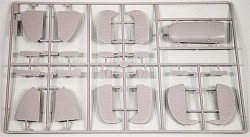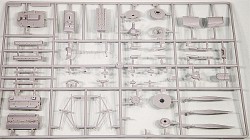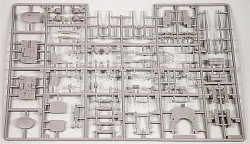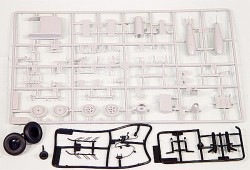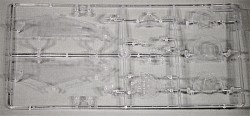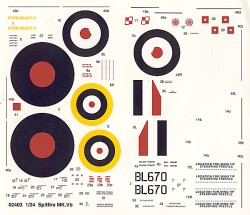Trumpeter 1/24 Supermarine Spitfre Mk.Vb | 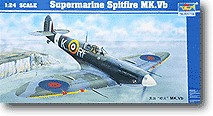 | Background The Supermarine Spitfire was the right aircraft at the right time to augment the venerable Hawker Hurricane and defend the skies of Great Britain from Germany’s powerful Luftwaffe. While the Mark I and Mark II Spitfires were able give a fair accounting of themselves, the Bf 109E was posing a greater menace and evolution of the Spitfire was pushed forward. Delays in the Spitfire Mk.III dictated an interim version be produced, the Mk.V with the more powerful Merlin 45. As history would play out, the Mk.V Spitfire was such a success that it would become a mainstay to the RAF and not the interim solution that it was originally intended. The Kit In the second release in this scale, Trumpeter has selected the Supermarine Spitfire as its subject. Molded in light gray styrene, this kit is impressive to look at, not only for its size, but also the details that are provided. The cockpit is the starting point of this kit and one whole step is dedicated to the assembly of the 13 piece pilot’s seat. The instrument panel features acetate instrument faces and is complete with gunsight and whiskey compass. Next up is the Merlin 45 engine, and it is a kit in its own right. What is new in this kit over the previous 1/24 offering, the P-51 Mustang, are a set of wiring harnesses and plumbing cast in a rubberized plastic. This is a very interesting set of features and it will be fun to see how these work out in assembly. The fuselage halves go together trapping the engine compartment and cockpit subassemblies inside. Also featured is an interesting hinged rudder with photo-etched hinges attached to a piano-wire shaft. The kit also includes the Trumpeter trademark choice of clear or opaque nacelle panels so that you have the option of displaying your detailed engine. The wing assembly includes two cannons and four machine guns revealed inside open gun bay doors, complete with ammunition. The ailerons and flaps are also hinged in the same manner as the rudder. This brings us to the horizontal stabs and elevators and the only real ‘problem’ in the kit – the upper surface of the horizontal stabs is portrayed as fabric-covered and the underside is metal skinned. While the elevators of the Spitfire were (and are correctly portrayed as) fabric covered, the horizontal stabs were metal skinned. You’ll just need to sand away the fabric detailing and scribe a few details to match the underside. No biggie here. The main landing gear struts are articulating, with springs inside to provide a more realistic appearance whether the aircraft is on the gear or not. Decals Markings are provided for a single example, RF-K/BL670 of 303 Sqn. The underwing roundels appear to have a bite taken out of the red circles until you realize that Trumpeter has intentionally done this to facilitate the decal placement over the machine gun shell ejector ports. A complete set of maintenance stencils is also provided on this sheet, so plan on taking a little time to get your markings up to regulation. Conclusion There do not appear to be any lurking problems in assembly. Trumpeter has taken a simple approach to this kit and it should be an easy build for modelers with a little modeling experience. It boggles the mind when you consider that Trumpeter only appeared on the modeling scene a few years ago and already they have offered kit subjects that have not been seen before in a given scale and/or have moved the bar up on quality and detail for those subjects that have been previously produced. Is every kit perfect? No manufacturer has produced the perfect model (yet). When you consider that even the best model makers have their problem kits (like the wing sweep on the Hasegawa 1/48 F-86), you just need to make informed decisions on your projects. Despite all of the uproar about some inaccuracy in a given kit, it is interesting that at the end of the day, these kits are still winning contests when properly built out of the box, and stand back when we start adding our own detailing...
| 








|



